√1000以上 y'=y/x cos(y/x) 550145-Xcos(y/x)dy/dx=y cos(y/x)+x
Sep 02, 09 · use implicit differentiation, and expand the cos(xy) term using the cos addition rule xcos(xy) = x cosx cosy sin x sin y =0 take d/dx of each term d/dx (x) =1 d/dx(cosx cosy) = sinx cosy cosx siny dy/dx d/dx(sinx sin y) = cosx siny sin x cos y dy/dx so you have 1sinx cosy cosx siny dy/dx cosxsiny sin x cosy dy/dx =0Answer to Find the second derivative, y"(x), of 3y2 = 2x3 x cos y y"(x) = 4( cos y 3)(y')2/ 3y sin y y"(x)= 2x2 Sin X At Which The Tangent Line Is Horizontal (answers As A Commaseparated List Use N To Represent Any Integer)
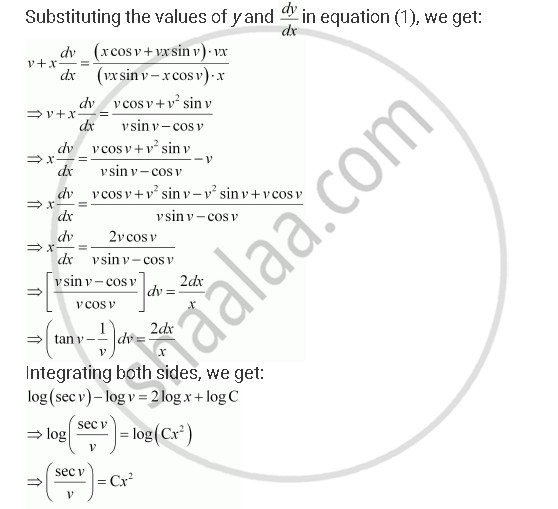
Show That The Given Differential Equation Is Homogeneous And Solve Each Of Them Xcos Y X Ysin Y X Ydx Ysin Y X Xcos Y X Xdy Mathematics Shaalaa Com
Xcos(y/x)dy/dx=y cos(y/x)+x
Xcos(y/x)dy/dx=y cos(y/x)+x-Y(t) = c1 cos(t) c2 sin(t) −cos(t)ln(sec(t) tan(t)) #17 Verify that the given function y1 and y2 satisfy the corresponding homogeneous equation;Oct 28, 11 · 1/y * y' = (6 sinx) * lnx (1/x) * (6 cosx) > simplify & expand 1/y * y' = 6 ( sinx lnx cosx / x ) > multiply both sides by y to isolate y' y' = 6 y ( sinx lnx cosx/x) > substitute y back in from the original equation



How Do You Verify Sin X Cos Y Cos X Sin Y Cos X Cos Y Sin X Sin Y Tan X Tan Y 1 Tan X Tan Y Socratic
Y = Cos(x2) Find Y' AND Y'' 2 Find An Equation Of The Tangent Line To The Curve At The Given Point Y = (1 4x)12, (0, 1) 3 Find The Xcoordinates Of All Points On The Curve F(x) = Sin 2x ?Solve the initial value equation y = x cos x 2 sin x with y(0) = 1 and y (0) = 2 Select one O a y = x cos x x 1 O b y = x sin x 1 O c y = cos x x O d y = x cos x 1 Consider the system X' = AX where is a 3 x 3 matrix with a complex eigenvalue a fi corresponding to an eigenvector a blFree math problem solver answers your algebra, geometry, trigonometry, calculus, and statistics homework questions with stepbystep explanations, just like a math tutor
Mar 31, 08 · Let's step through it y′′ y=sin(x)xcos(x) y ″ y = s i n ( x) x c o s ( x) The auxiliary equation is m21 =0, m= i, m = −1 m 2 1 = 0, m = i, m = − 1 Since the solutions to the auxiliary equation are complex, we have yc = C1cos(x)C2sin(x) y c = C 1 c o s ( x) C 2 s i n ( x)Cov(X,Y) = E((XE(X)) * (YE(Y)) ) (which happens to be equal to E(XY)E(X)E(Y) the definition you may have seen) But in any case, from the definition you can check Cov(XZ,Y) = Cov(X,Y) Cov(Z,Y) and that's why you can 'expand brackets' (and similarly in the second 'slot')Hint Use the Method of undetermined coefficients Since x is a polynomial of degree one and i is not a solution of the characteristic polynomial, you should try with y p ( x) = ( A x B) cos ( x) ( C x D) sin ( x) where the constants A, B, C, D have to be determined by plugging y p in the differential equation
Graph y=cos(x) Use the form to find the variables used to find the amplitude, period, phase shift, and vertical shift Find the amplitude Amplitude Find the period of Tap for more steps The period of the function can be calculated using Replace with in the formula for periodFind dy/dx e^ycos(x)=1sin(xy) Differentiate both sides of the equation Differentiate the left side of the equation Tap for more steps Differentiate using the Product Rule which states that is where and The derivative of with respect to is Simplify the expressionJun 03, 16 · cos(xy) = cos\ x* cos\ y sin\ x* sin\ y cos(xy) = cos\ x*cos\ y sin \ x*sin\ y sin^2 x cos^2\ x= 1 cos(xy) = cos\ x* cos\ y sin\ x* sin\ y cos(xy) = cos\ x



Solving Second Order Non Homogeneous Differential Equation 3 Mathematics Stack Exchange


Differential Equation Help D2jsp Topic
Solution for 12) dy dx = x cos (6x²), y(0) = 7 A) y == sin (u) B) y = sin(6x2) 12 C) y = sin (6x²) D) y sin(6x²) 2 ='Apr 07, 17 · I'm going to assume you meant #sin(xy)/(sinxcosy)=1cotxtany# and just forgot parentheses on the left side denominator and the plus on the right side, otherwise the identity is false Let's start working the left hand side by using the sine addition formula #sin(alphabeta)=sinalphacosbetacosalphasinbeta#Answer to Sketch the region enclosed by the curves and find its area y = \cos \pi x, y = 4x^2 1 By signing up, you'll get thousands of



Trigonometry Proof Cos X Y Cos X Cos Y Sin X Sin Y Youtu Be B0o Dvfkybu Youtube


If Cos Y X Cos A Y With Cos A Is Not Equal To 1 How Do You Prove That Dy Dx Cos 2 A Y Sin A Quora
Compute answers using Wolfram's breakthrough technology & knowledgebase, relied on by millions of students & professionals For math, science, nutrition, history, geography, engineering, mathematics, linguistics, sports, finance, music WolframAlpha brings expertlevel knowledge andSince the general solution to the homogeneous equation, y'' y= 0 are \sin(x) and \cos(x), we look for a solution of the form y(x)= u(x)\cos(x) v(x)\sin(x) As I pointed out before, cos 2 ( x ) = cos ( 2 xWe have mathy=/mathmathcos(xy)/math Differentiating, math\dfrac{dy}{dx} = \sin(xy)(xy)'/math Chain rule math\Rightarrow \dfrac{dy}{dx} = \sin(xy


If Sin Y X Cos A Y How Do You Prove That Dy Dx Cos A Y Cos A Quora



Ex 9 2 8 Verify Y Cos Y X Y Sin Y Cos Y X Y Y
Sin(x y) = sinxcosy cosxsiny sin(x y) = sinxcosy cosxsiny cos(x y) = cosxcosy sinxsiny cos(x y) = cosxcosy sinxsiny tan(x y) = tanxtany 1 tanxtany tan(x y) = tanx tany 1tanxtany HalfAngle Formulas sin 2 = q 1 cos 2 cos 2 = q 1cos 2 tan 2 = q 1cos tan 2 = 1 cosx sinx tan 2 = sin 1cos DoubleAngle Formulas sin2 = 2sin cos cos2 = cos2 sin2 tan2 = 2tan 1 tan2Compute answers using Wolfram's breakthrough technology & knowledgebase, relied on by millions of students & professionals For math, science, nutrition, historyIf units of degrees are intended, the degree sign must be explicitly shown (eg, sin x°, cos x°, etc) Using this standard notation, the argument x for the trigonometric functions satisfies the relationship x = (180x/π)°, so that, for example, sin π = sin 180° when we take x = π In this way, the degree symbol can be regarded as a


If Y X Sin X Cos X X 2 1 X 2 1 Find Dy Dx Sarthaks Econnect Largest Online Education Community



Differentiate Y X Cos X Youtube
Here is a "reductio in absurdum" approach y ′ ycos(x) = sin(x)cos(x) y ′ = cos(x)(sin(x) − y) now set sin(x) − y = z, we get cos(x) − y ′ = z ′ cos(x) − z ′ = cos(x)z z ′ = cos(x)(1 − z) now let 1 − z = a, − z ′ = a ′, − a ′ = cos(x)aJan 15, 17 · dy/dx = x^cosx(sinxlnx cosx/x) y = x^cosx Take the natural logarithm of both sides lny = ln(x^cosx) Use the logarithm law for powers, which states that loga^n = nloga lny = cosxlnx Use the product rule to differentiate the right hand side d/dx(cosx) = sinx and d/dx(lnx) 1/y(dy/dx) = sinx(lnx) cosx(1/x) 1/y(dy/dx) = sinxlnx cosx/x dy/dx = (sinxlnx cosx/x)/(1/y) dy/dx = xLxy ″ (x) y(x) ( s) = Lxcos2(x) ( s) = 1 2 ⋅ (Lx1 ( s) Lxcos(2x) ( s)) So, we use that Lxy ″ (x) ( s) = s2 ⋅ Y(s) − s ⋅ y(0) − y ′ (0) Lxy(x) ( s) = Y(s) Lx1 ( s) = 1 s Lxcos



Assume That Y Is A Function Of X Find Y1 Dydx For Cos2x Cos2y Cos 2x 2y Math Homework Answers



Solve Cos X Dy Y Sin X Y Dx Mathematics Stack Exchange
Then find a particular solution of the given nonhomogeneous equation x2y′′ −3xy′ 4y = x2 lnx, x > 0, y 1(x) = x2, y2(x) = x2 lnx Solution Notice that y′ 1(x) = 2x, and y′′ 1(xGraph y=x^2cos(x) Use the form to find the variables used to find the amplitude, period, phase shift, and vertical shift Find the amplitude Amplitude Find the period using the formula Tap for more steps The period of the function can be calculated using PeriodAnswer to y'' 4y' 4y = e^x cos x Find solutions for your homework or get textbooks Search


10 3 Integration Of Trigonometric Functions



Ex 9 2 8 Verify Y Cos Y X Y Sin Y Cos Y X Y Y
优质解答 微分方程y″y=xcosx对应的齐次微分方程为y''y=0 特征方程为t 2 1=0 解得t 1 =i,t 2 =i 故齐次微分方程对应的通解y=C 1 cosxC 2 sinx 因此,微分方程y″y=xcosx对应的非齐次微分方程的特解可设为y * =axbx(csinxdcosx) y * '=acsinxdcosxcxcosxdxsinx y * ''=ccosxdsinxccosxcxsinxdsinxdxcosx 将y * ,y * ',y * ''代1 day ago · Show all steps find dy/dx by implicit differentiation 1 x sin y y sin x = 1 2 use inplicit diff find the equation of the tangent line to the curve at the given point sin(xy)=2x2y (pi,pi) 3 find y' and y'' y=ln(1lnx) 4 use log diff to findFind dy/dx x=cos(y) Differentiate both sides of the equation Differentiate using the Power Rule which states that is where Differentiate the right side of the equation Tap for more steps Differentiate using the chain rule, which states that is where and Tap for more steps



If Cos X Y Cos Y X Find Dy Dx Maths Continuity And Differentiability Meritnation Com


Find The Solution Of The Differential Equation Xdy Ydx Y Sin Y X Ydx Xdy X Cos Y X Sarthaks Econnect Largest Online Education Community
Aug 02, 11 · Let x = y = 0 Then cos x = cos y = 1 But cos (0 0) does not equal cos 0 cos 0Solution f x x x cos y ye x cosy yex f y y x cosy ye x x sin y e x 2 f x 2 x f from MATH 2 at University of WollongongMar 11, 21 · Ex 55, 14 Find 𝑑𝑦/𝑑𝑥 of the functions in, 〖(cos〖𝑥 〗)〗^𝑦 = 〖(cos〖𝑦 〗)〗^𝑥Given 〖(cos𝑥)〗^𝑦 = 〖(cos𝑦
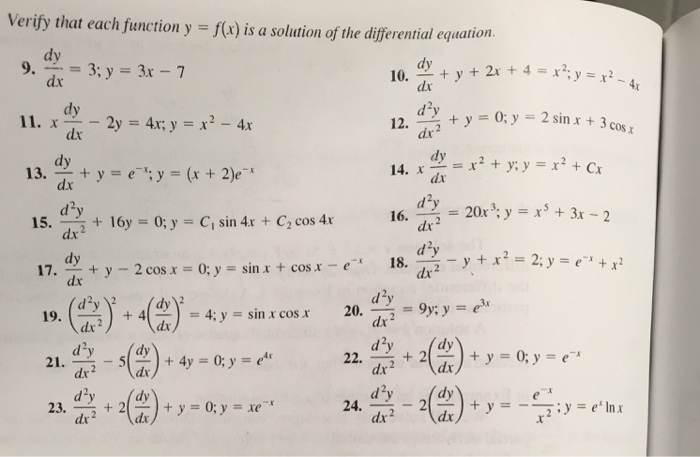


Solved Verify That Each Function Y F X Is A Solution O Chegg Com



Solved Which Of The Following Ordinary Differential Equat Chegg Com
First we find solution to the corresponding homogeneous equation math\qquad y'' 2y' y = 0/math by setting up and finding roots of characteristicMay 31, 10 · First find a solution to the homogeneous DE y'' y = 0 y=e^(rx) r² 1 = 0 r = / i y_h = C_1*sin(x) C_2*cos(x) Seek a particular solution to the nonhomogeneous DE
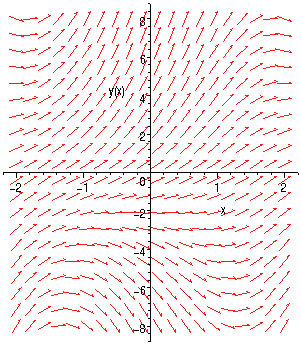


Slopefield Html



Sin Dy Dx Y X Page 1 Line 17qq Com



Find Equation Of Tangent To The Curve Y Xcos2x At X Pi 2 Youtube



Find Particular Solution Cos Y Dx 1 2e X Sin Y Dy 0 Y 0
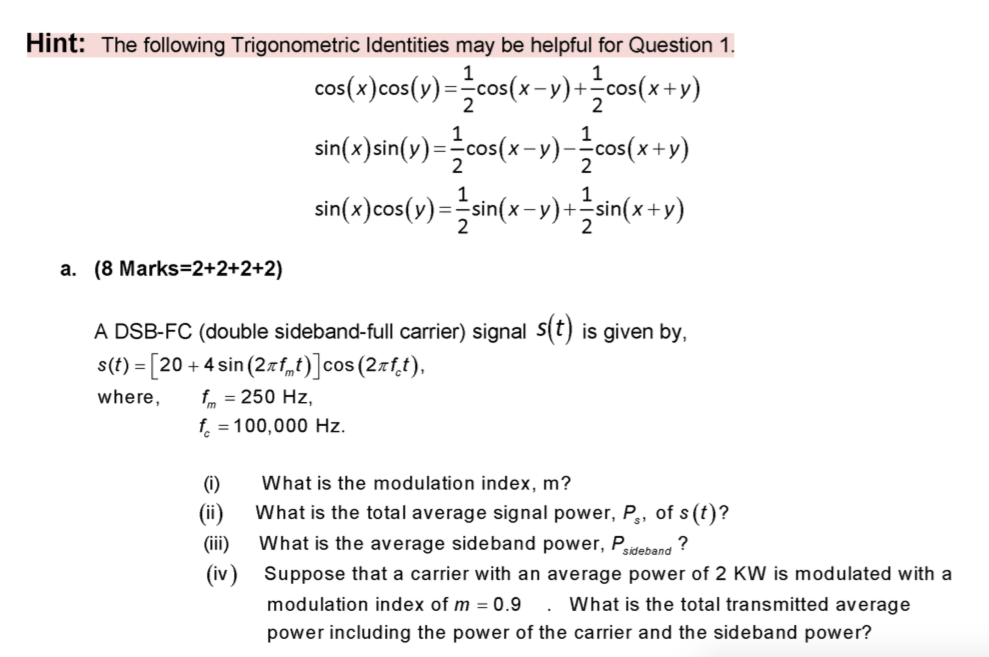


Solved Hint The Following Trigonometric Identities May B Chegg Com



Solve The Differential Equation X Dy Dx Y X Cosx Sinx Given That Y Pie 2 1 Maths Differential Equations Meritnation Com



What Is The Partial Derivative Of Cos Y X With Respect To X Quora



Function F X Y Sin X Cos Y Download Scientific Diagram
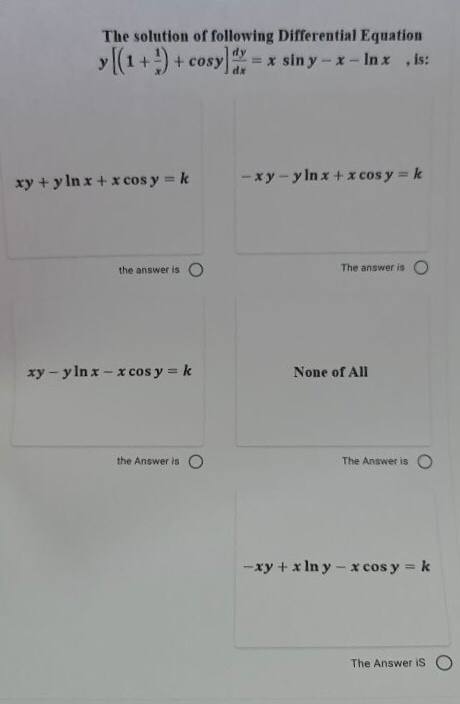


Answered The Solution Of Following Differential Bartleby


If Y X Is A Solution Of 2 Sinx 1 Y Dy Dx Cosx And Y 0 1 Then Find The Value Of Y P 2 Studyrankersonline



Show That The Given Differential Equation Is Homogeneous And Solve Each Of Them Xcos Y X Ysin Y X Ydx Ysin Y X Xcos Y X Xdy Mathematics Shaalaa Com



Solution Of The Differential Equation Siny Dy Dx Cosy 1 Xcosy



Example 16 Show X Cos Y X Y Cos Y X X Is Homogeneous



Why Is Sin Y And Cosine X Game Development Stack Exchange
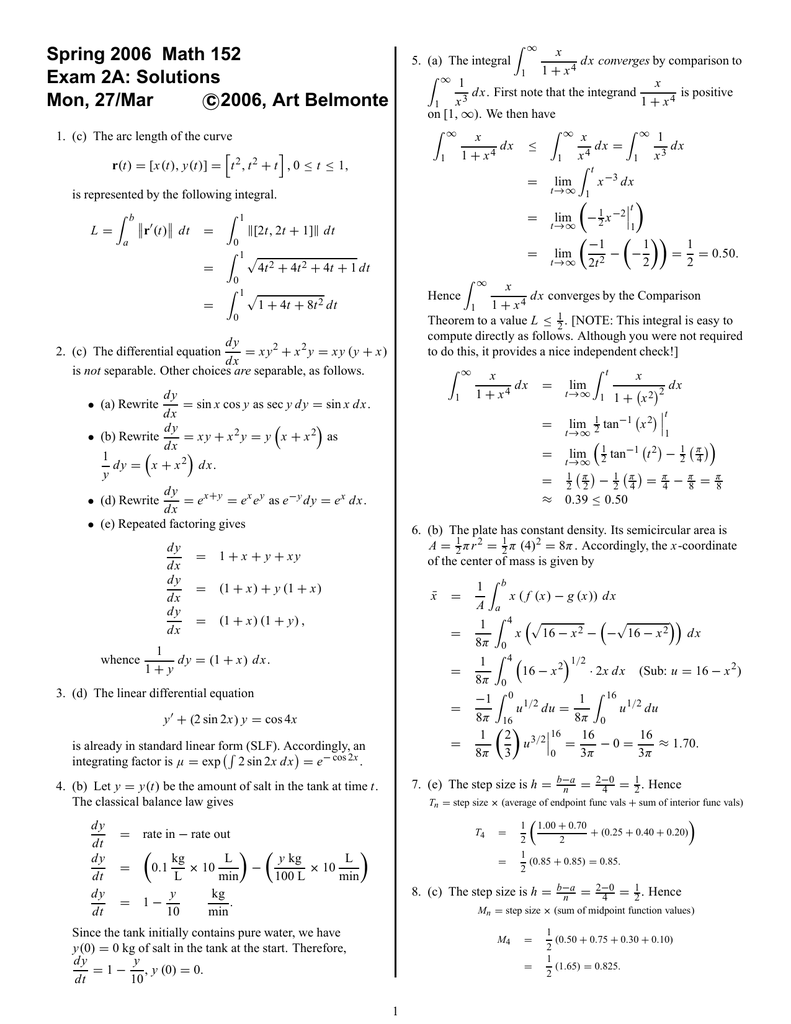


Document



The General Solution Of The Following Exact Equation Y Cos Xy 2xy Dx X Cos Xy X 2 3y 2 Dy 0



Solve The Following Differential Equation X 2 Dy Dx Xy 1 Cos Y X X 0 Youtube
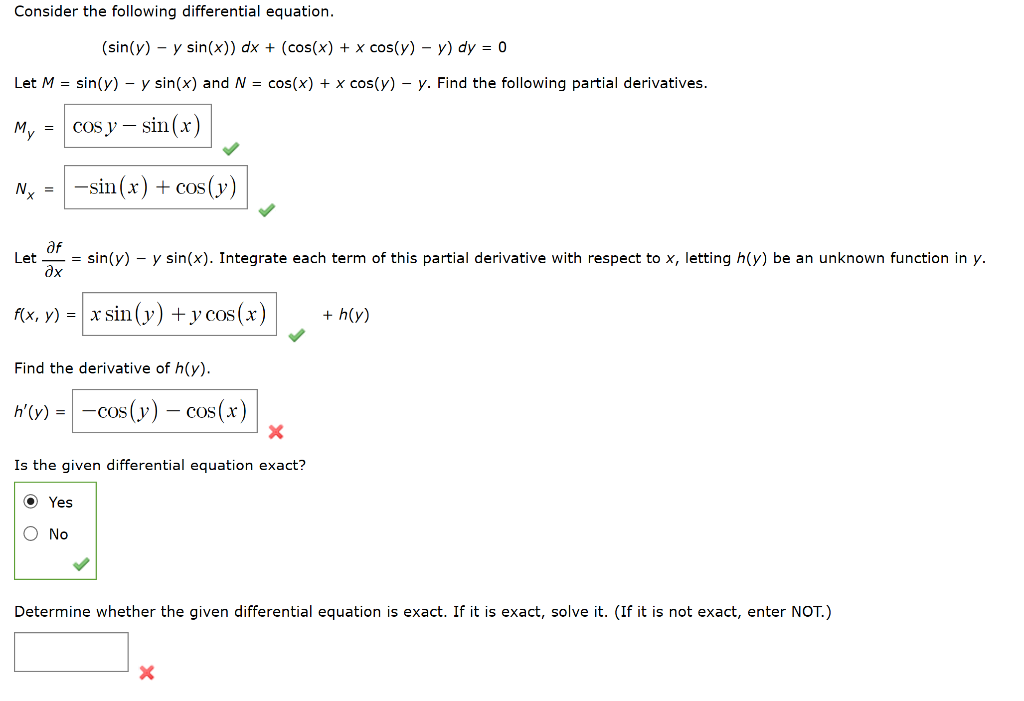


Solved Consider The Following Differential Equation Sin Chegg Com


Cosx Y Siny X Then Find Dy Dx Quora
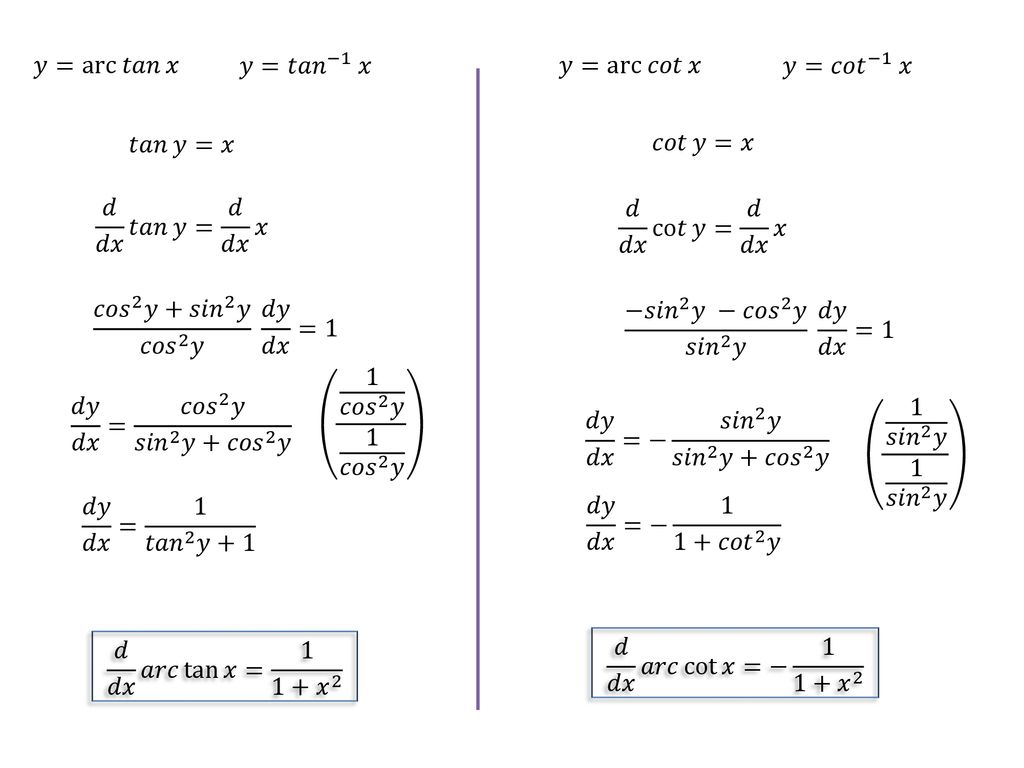


8 Derivatives Of Inverse Trig Functions Ppt Download



The Solution Of Differential Equation Xcos Y X Ysin Y X Y Y S



Solved Which Differentiation Rule Is Used To Show D Dx Si Chegg Com
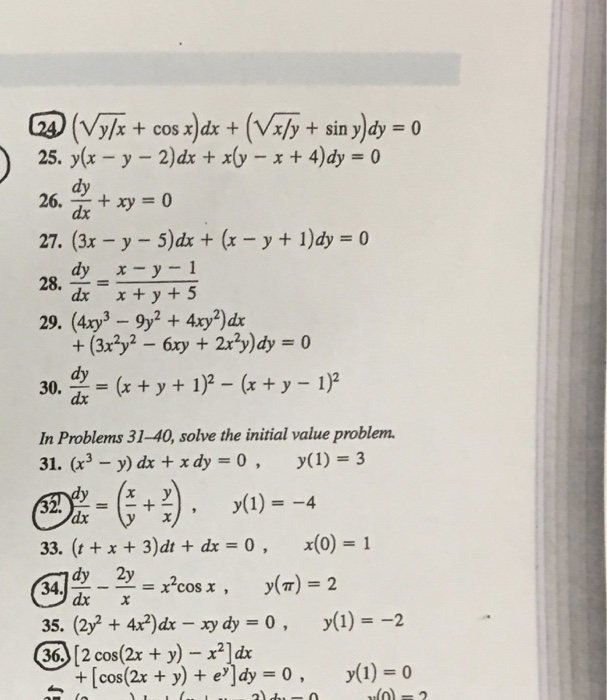


Solved Y X Cos X Dx Vs Y Sin Y Dy 0 25 Y X Y 2 D Chegg Com



Otvety Mail Ru Y Y X Cos Y X


What Is Math Frac Dy Dx Math If Math X Cos Y Y Cos X 1 Math Quora



If Y Sqrt X Sin X Cos X Find Dy Dx Youtube



X Dy Dx Y X Cos 2 Y X Youtube


What Is The Value Of Dy Dx If X Cos Y Sin X Y Quora



Example 27 Solve X Dy Ydx Y Sin Y X Ydx Xdy


Find The Particular Solution Of The Differential Equation X Cos Y X Dy Dx Y Cos Y X X Given That When X 1 Y Pi 4 Sarthaks Econnect Largest Online Education Community



How Do You Show That The Curve X Cos T Y Sin T Cos T Has Two Tangents At 0 0 And Find Their Equations Socratic


Solve Dy Dx Cos X Y Sin X Y Studyrankersonline


Determine The General Solution Of Y Y Cos X Stumbling Robot



F X Y X 2 Y Y Y F F X X 2xyx 2 3y Y Ln2 Z F X Y Cos Xy X Cos 2



Solve The Following Differential Equation X Dy Dx Y Xcos 2 Y


Find The Particular Solution Of The Differential Equation X 2dy Dx Xy 1 Cos Y X X 0 When X 1 Y Pi 2 Sarthaks Econnect Largest Online Education Community



Misc 16 If Cos Y X Cos A Y Prove Dy Dx Cos2 A Y



E 2y Y Cos Xy Dx 2xe 2y X Cos Xy 2y Dy 0 Brainly In



Particular Integral Of X 2 Y Xy 4y Cos Ln X X Cdot Sin Ln X Mathematics Stack Exchange



How To Solve The Differential Equation Math Y Y Cos 2 X Math Quora



Qtiplot



Solve Xy Cos Xy Sin Xy Dx X 2cos Xy Dy 0 Youtube



If Y X Sin Y Prove That Dy Dx Y X 1 X Cos Y Brainly In



Differential Equations Solved Examples 17



How Do You Verify Sin X Cos Y Cos X Sin Y Cos X Cos Y Sin X Sin Y Tan X Tan Y 1 Tan X Tan Y Socratic



If Y X Sin Y Prove That X Dy Dx Y 1 X Cos Y Mathematics Topperlearning Com Tz9vph66



Solved I F X Y Xy In X Y Iii F X Y X Cos X Co Chegg Com



If Cos Y X Cos Y A Prove That Dy Dx Cos2 Y A Sin A Mathematics Topperlearning Com Bse344



Pin En Differential Equations Videos



Ex 9 2 6 Verify Y X Sin X Xy Y X Root X2 Y2



Differential Equations Solved Examples Solve The Exact Differential Equation E Y X 2 Sin Y Dx X E Y Cos Y Dy 0
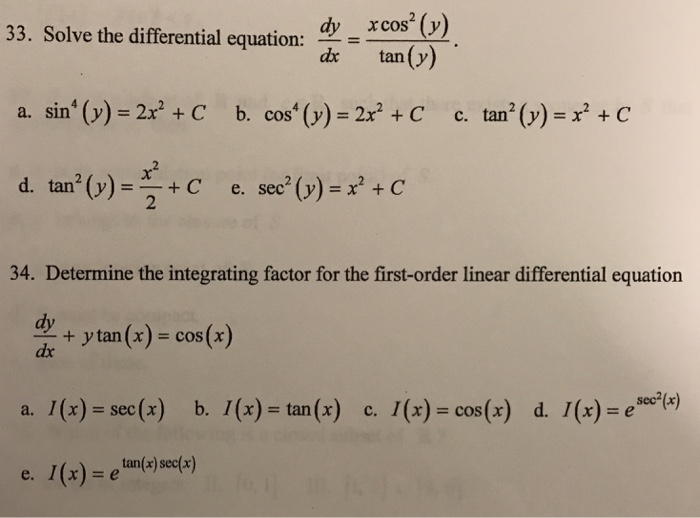


Solved Solve The Differential Equation Dy Dx X Cos 2 Chegg Com



Get The Solution To The Differential Equation Cos Y Sin2x Dx Cos 2y Cos 2x Dy 0 Mathematics Stack Exchange
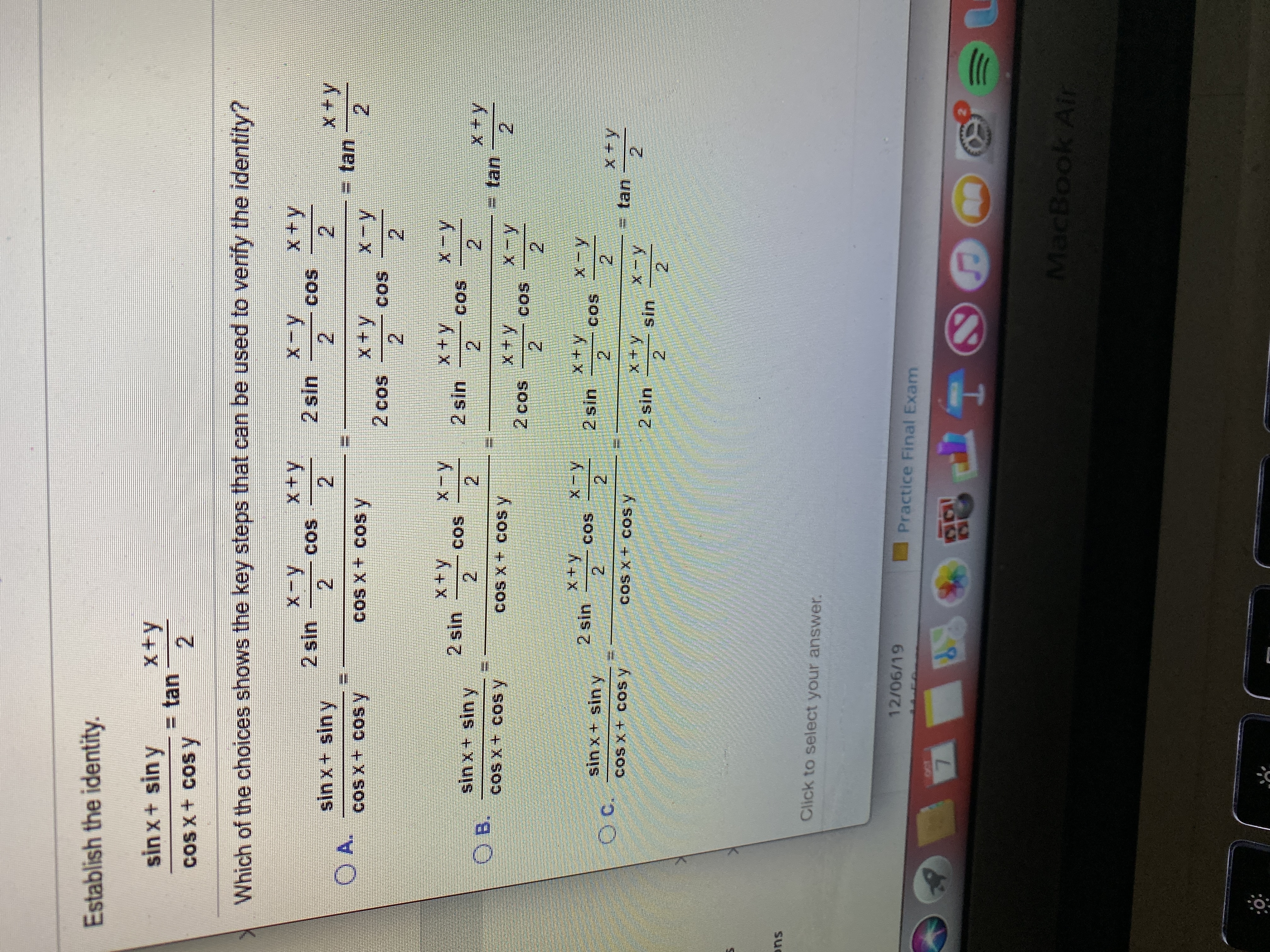


Answered Establish The Identity Sin X Sin Y X Y Bartleby



Ex 9 5 7 Show Homogeneous X Cos Y X Y Sin Y X Y Dx


Solve The Following Differential Equation X Dy Dx Y Xcos 2 Y X Sarthaks Econnect Largest Online Education Community



Find The Equation Of The Curve Passing Through The Point 0 Pi 4 Whose Differential Equation Is Sin X Cos Y Dx Cos X Sin Y Dy 0 Mathematics Shaalaa Com



Differential Equation Variation Of Parameters Y Y X Cos X Youtube



Ex 9 5 7 Show Homogeneous X Cos Y X Y Sin Y X Y Dx
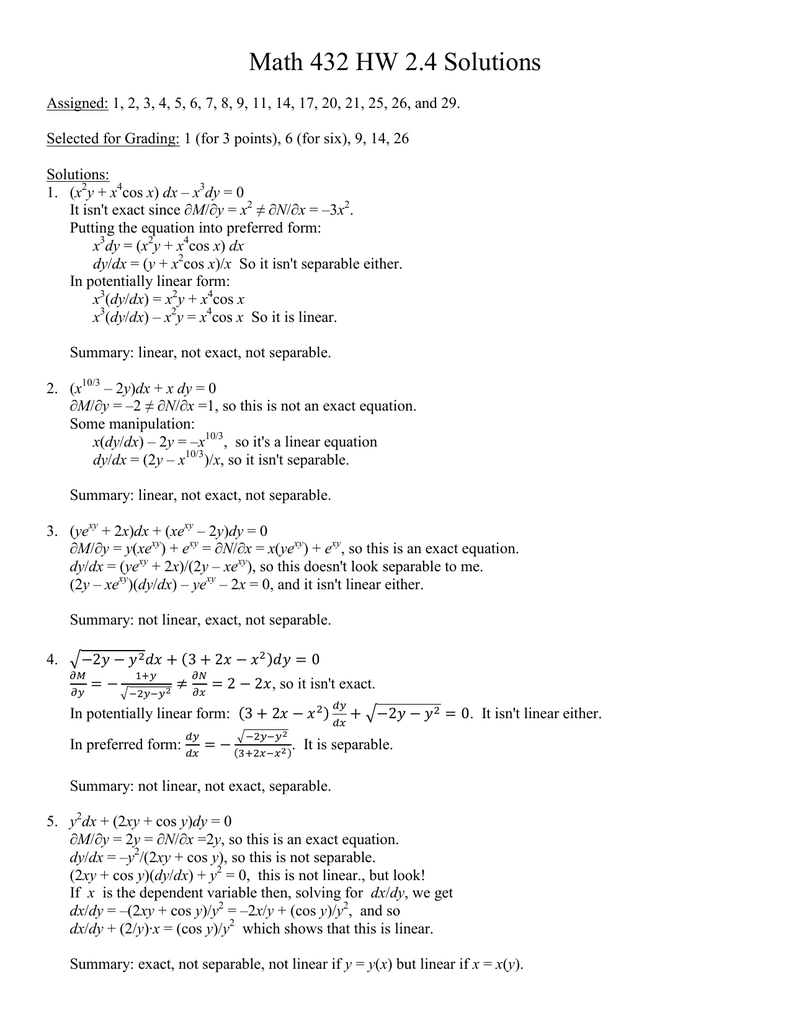


Math 432 Hw 2 4 Solutions



Solve Cos X Dy Y Sin X Y Dx Mathematics Stack Exchange



Exact Differential Equation Tan X Sin X Sin Y Dx Cos X Cos Y Dy 0 Youtube


Solve The Following Differential Equation Y X Cos Y X Dy Y Cos Y X 2x Sin Y X Dx 0 Sarthaks Econnect Largest Online Education Community



Solved Sin X 3 5 Cos Y 1 5 X Is In Quadrant Ii And Chegg Com



Solution Of The Differential Equation Siny Dy Dx Cosy 1 Xcosy



Solve Cos X Cos Y Dy Sin X Sin Y Dx 0 The Answer Give In The Book Is Sin Y C Cos X Brainly In


Joerg Endrullis
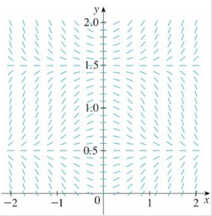


A Direction Field For The Differential Equation Y X Cos Py Is Shown A Sketch The Graphs Of The Solutions That Satisfy The Given Initial Conditions I Y 0



Example 16 Show X Cos Y X Y Cos Y X X Is Homogeneous


What Is The Solution To This Differential Equation X Cos 2 Y Dx Tan Ydy 0 Quora
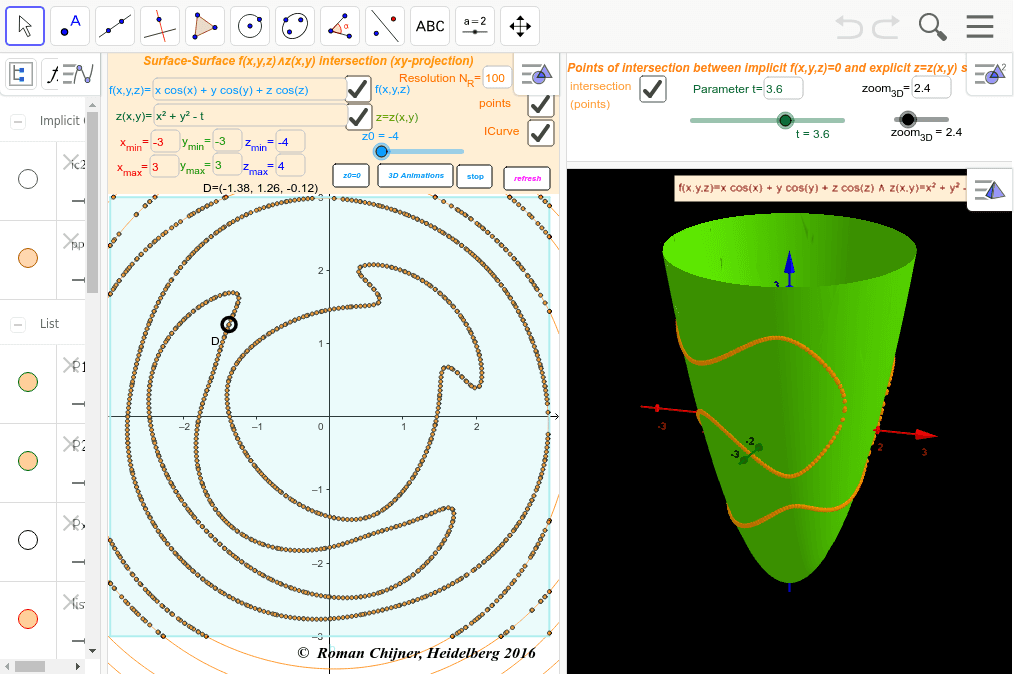


Points Of Intersection Between Implicit F X Y Z 0 And Explicit Z Z X Y Surfaces Geogebra



How Do You Prove That Cos X Y Cosxcosy Sinxsiny Socratic



Sin Dy Dx Y X Page 1 Line 17qq Com


How To Solve 2x Y Cos Xy Dx X Cos Xy Dy 0 Quora


1 Graphs Of Y A Sin X And Y A Cos X


コメント
コメントを投稿